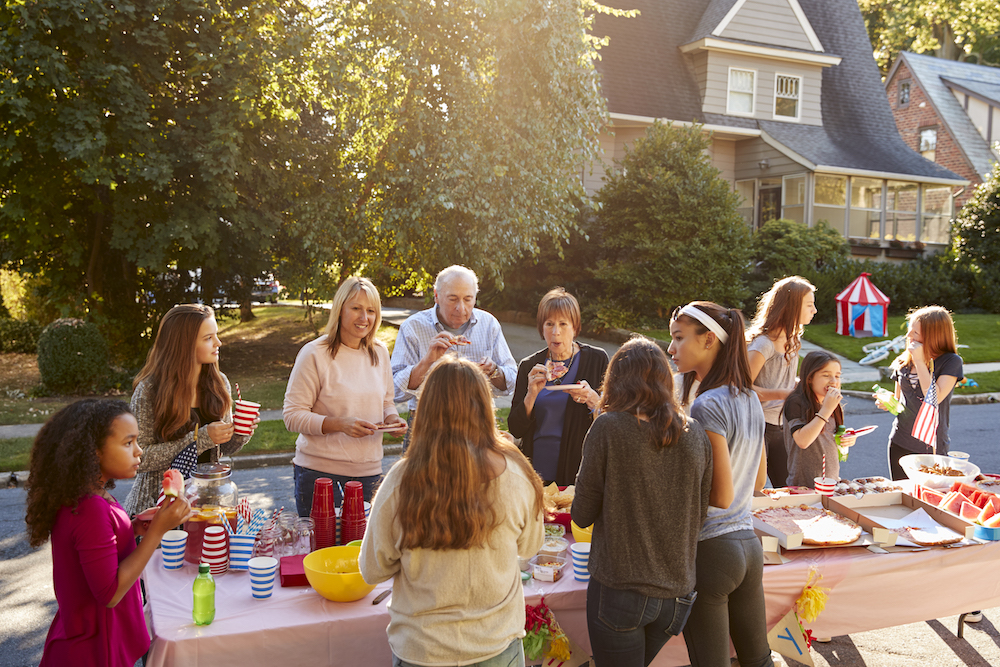
Almost 25 years ago, Harvard University political scientist Robert Putnam published his groundbreaking book, Bowling Alone, which documented the decline of American civic life since the mid-20th century. Today, Americans see their friends and family less, belong to fewer organizations, and are less likely to know their neighbors. It’s a startling trend that can be felt in the growing sense of disconnectedness and civic malaise many of us regularly experience. So what’s the solution? How do we reverse this trend and reinvigorate the social glue that holds our communities together? A big part of the answer is to build something, because people come together around a shared purpose.
Institutions are the sinew of society. Whether it’s the school board, a charity or volunteer group, or a church congregation, building an institution together in local community forms the bonds that create trust and belonging. What does it look like to come together and build something? A Good Faith podcast listener named Zachary has a story to inspire us all. So let’s gather around the campfire to hear how Zachary and his neighbors created something special.
When Zachary and his family moved to a small town in Missouri 10 years ago, their neighborhood was hardly a thriving hub of community. On Halloween nights, the porches were dark and the streets were quiet. “People just avoided our area,” he told me. “There’s a more affluent neighborhood that’s been known as the place you go for Halloween, and they’re super crowded.” So Zachary came together with some other folks from the neighborhood to build something. Together, they created the North Heights Neighborhood Group, and that group has made a huge difference in the community.
This October, you can expect the neighborhood to host a sugar-fueled scramble of Halloween delights. How did that happen? It began with a decorating contest on the neighborhood Facebook page. Soon Zachary’s neighbors were erecting coffins on their lawns, stringing spider webs across their porches, and adorning their front steps with pumpkins. The ghoulish and ghostly fare brought new life to the block. Porch lights stayed on the night of October 31st. What had been a quiet autumn night in years past became a bustling frenzy of crinkling candy wrappers and crunching leaves under the feet of the zombies, vampires, and mummies that began to haunt the sidewalks.
The North Heights Neighborhood Group has also been involved with creating a pre-Halloween neighborhood map of the participating houses as a way of getting his neighbors to commit to keeping the porch lights on. But this year, they didn’t create a map. “We didn’t need to,” he told me. “It was just huge. There were tons of kids. We bought more candy than we usually do, and we still ran out by 8:30!”
And the neighbors don’t just come together to trick-or-treat. In 2017, Zachary and his neighbors wanted to do something a little bigger than the typical ice-cream social. They worked together to put on the city’s first PorchFest, a gathering of neighbors to hear front-porch musical performances and enjoy street food together in community. What began with a handful of performers and a couple hundred folks turned into a vibrant festival of about 40 bands and more than 5,000 attendees.
I asked Zachary why PorchFest and a thriving neighborhood Halloween were such important institutions to build. After all, the interconnectedness of the online world makes it easier than ever to form communities of people who don’t merely live near you but share your background, your interests, and your viewpoints. “Physical space shapes us in ways that we don’t even think about,” he responded. Zachary noted that local, in-person connection provides something social media can’t: the beautiful mixture of diversity and commonality. As Zachary put it, neighborhoods are the places where “people build connections and spend time with those who they would probably hate online.” Unlike internet communities, our neighborhoods aren’t sorted by the news sources we read or the influencers we follow; they are an amalgamation of people with diverse backgrounds, vocations, hobbies, and beliefs who share a common interest in the good of the locality.
–
We want to hear more stories like Zachary’s. If you have one to share, let us know here. If political differences have caused pain in your life, consider checking out The After Party: Toward Better Christian Politics. Created by Good Faith host Curtis Chang, “Founding Friend” David French, and Christianity Today’s Russell Moore, this project may be the beginning of your own story of reconciliation.
Subscribers to Redeeming Babel will receive a discount on all Redeeming Babel courses, a monthly newsletter, and exclusive access to member only forums.
